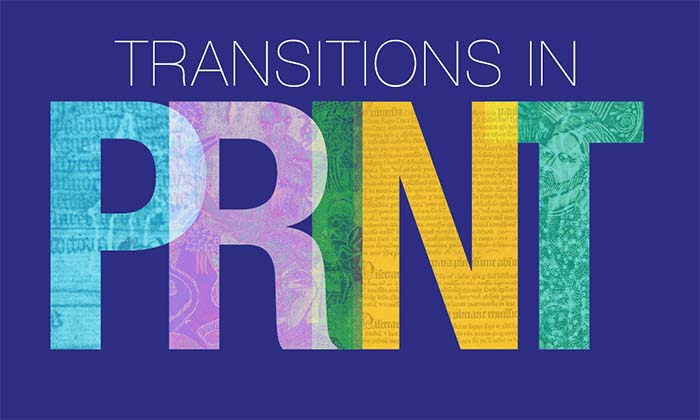New exhibition, Transitions in Print, launches at Rylands
12 Oct 2022
The exhibition draws on research by University academics and reveals hidden secrets of the European printing revolution.

About the exhibition
The John Rylands Research Institute and Library has one of the world’s greatest collections of 15th-century European printing. For over 100 years, we have used innovative technologies to examine these earliest printed artefacts.
In this exhibition, explore how scientists, historians and imaging specialists are joining forces to develop tools and new ways of looking at these historic documents using cutting-edge techniques, giving us new insights into our earliest printed heritage.
Grounded in University research
The exhibition draws on projects by University academics Dr Stephen Mossman (Senior Lecturer in Medieval History) and Prof Stephen Milner (Serena Professor of Italian Studies), in collaboration with national and international research associates and features the work of Imaging and Conservation specialists at the John Rylands Research Institute and Library.
Associated projects include:
- “Werck der Bücher”– Transitions, Experimentation, and Collaboration in Reprographic Technologies, 1440–1470 (Arts and Humanities Research Council UK and Deutsche Forschungsgemeinschaft)
- 15cBOOKTRADE Project (European Research Council)
- Beasts to Craft (European Research Council)
- Material-Scientific Methods for Reconstructing the History of Manuscripts (Deutsche Forschungsgemeinschaft) Centre for the Study of Manuscript Cultures (Hamburg)
Items in the exhibition
- Discover how we uncovered new information on a print of St Christopher which is one of the earliest produced in Europe.
- Examine an Indulgence, printed in the 1450s by Johann Gutenberg, to see if you can find details that are being studied by pattern recognition technology.
- Uncover the mystery of a woodblock thought to be a rare survival from the 15th century.
- See a printed copy of the blockbook Apocalypse as old as the Gutenberg Bible.
Find out more
Visit the Rylands website to find out more about the exhibition:
